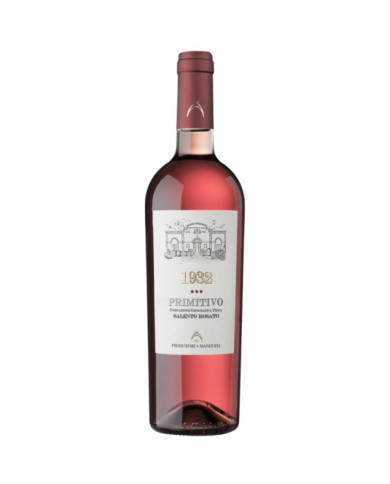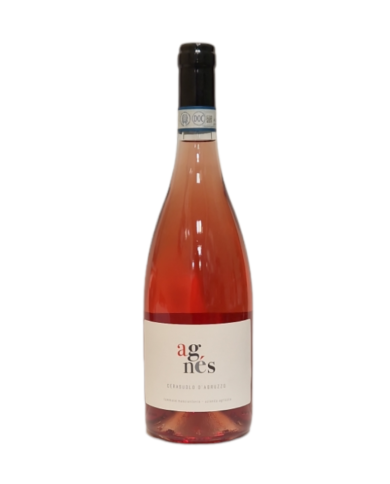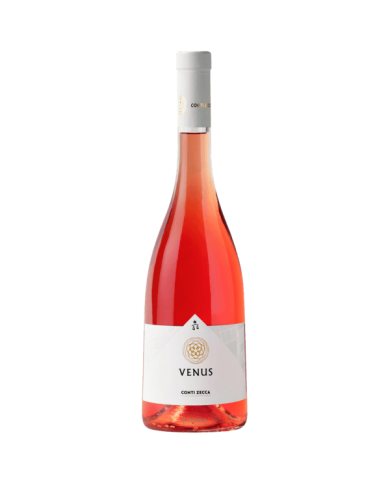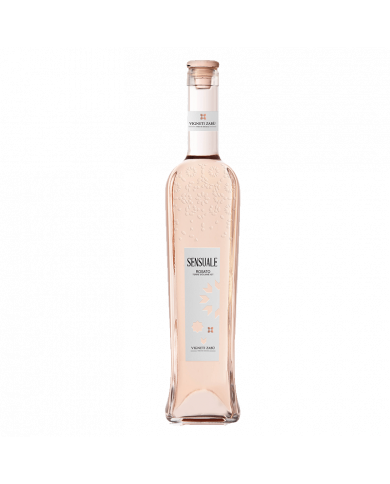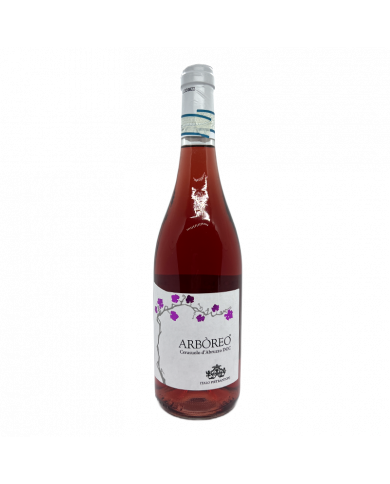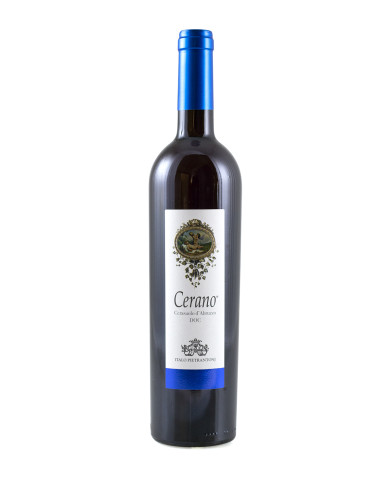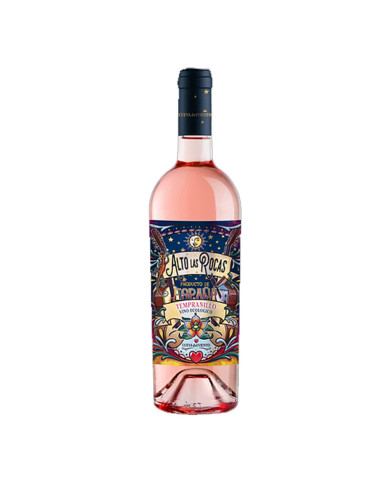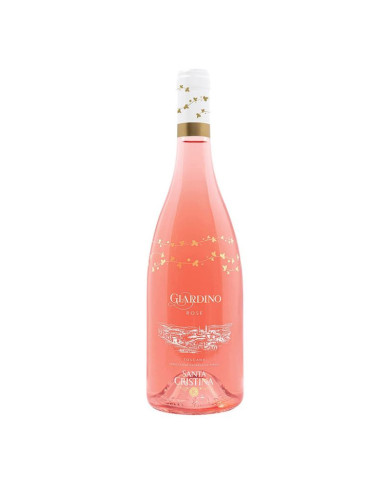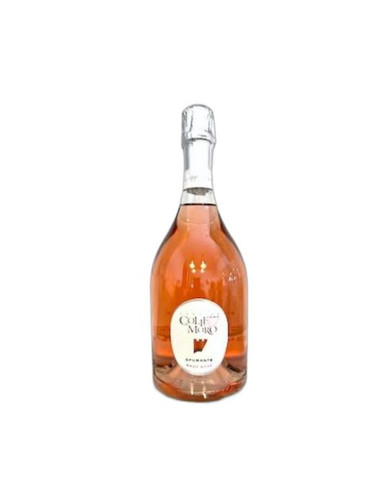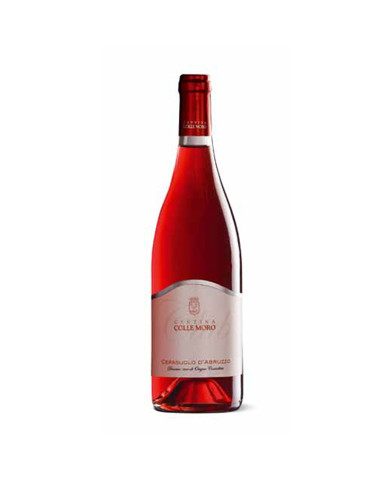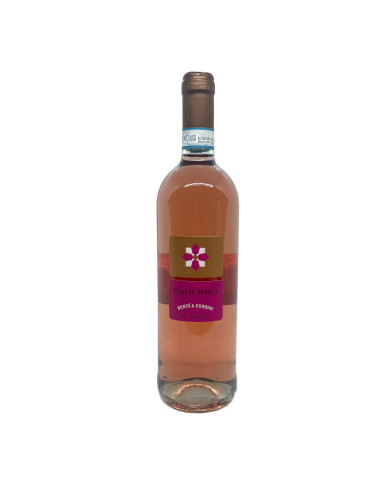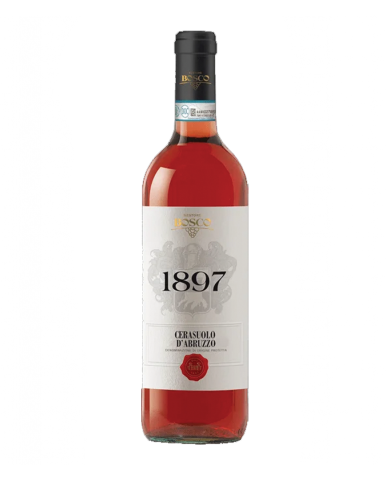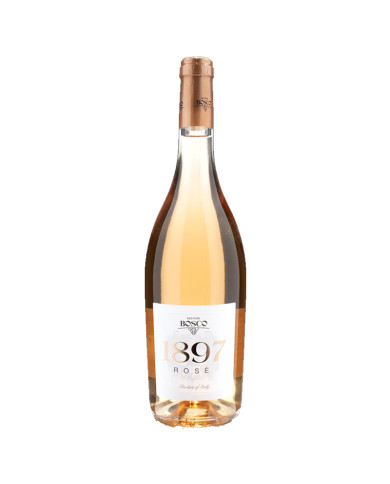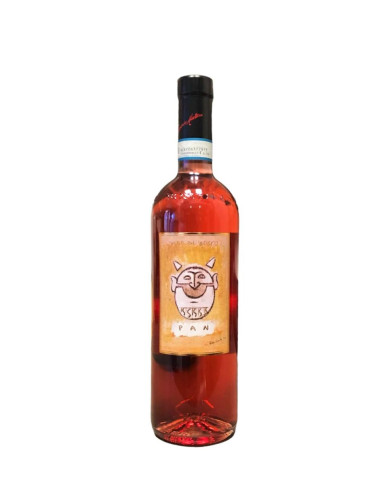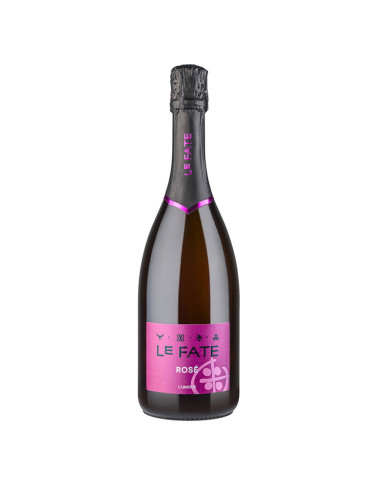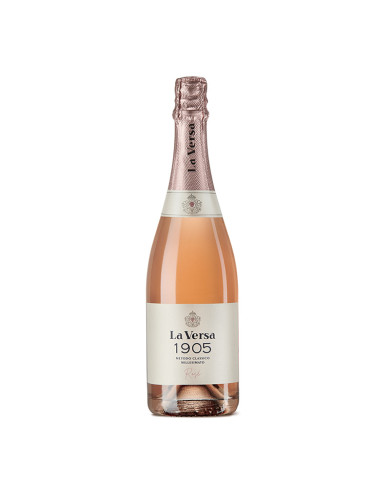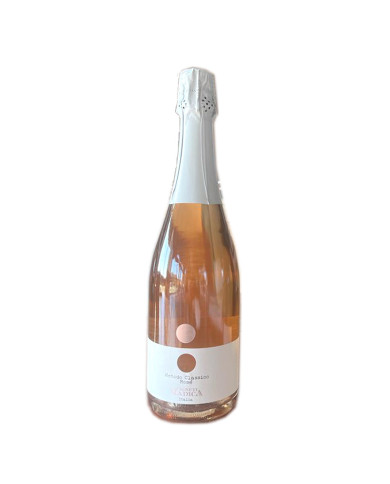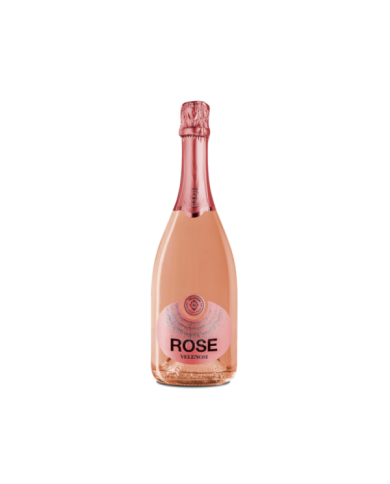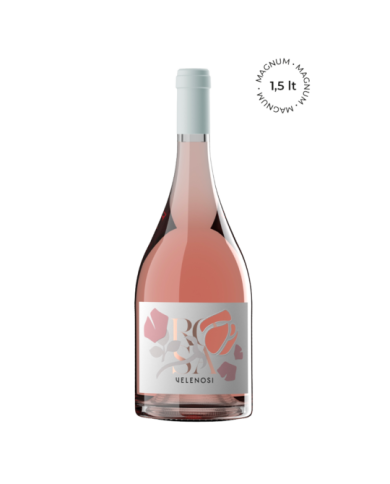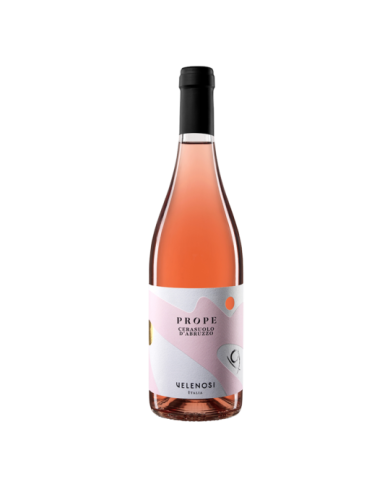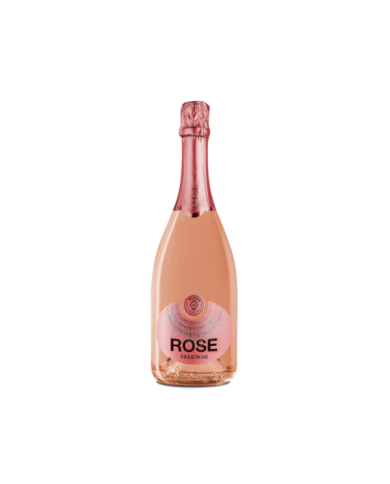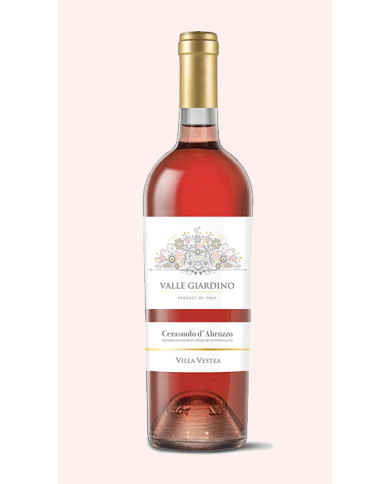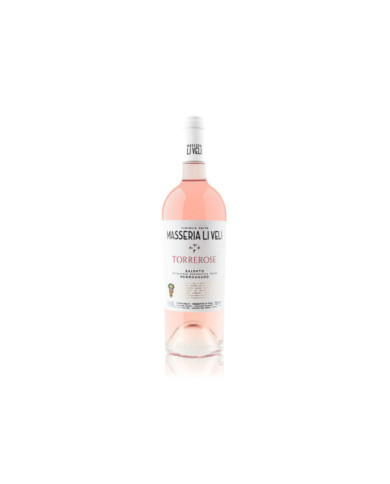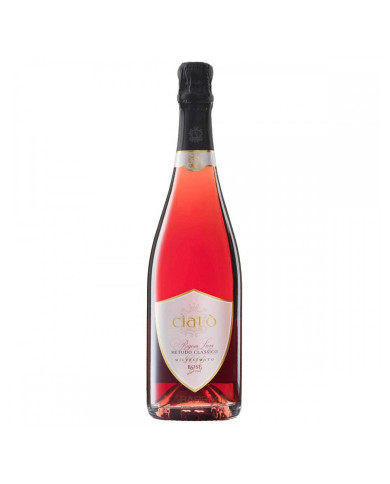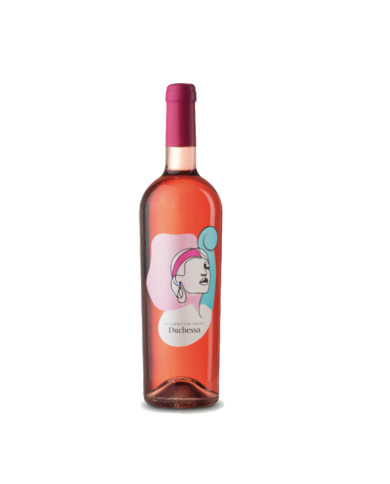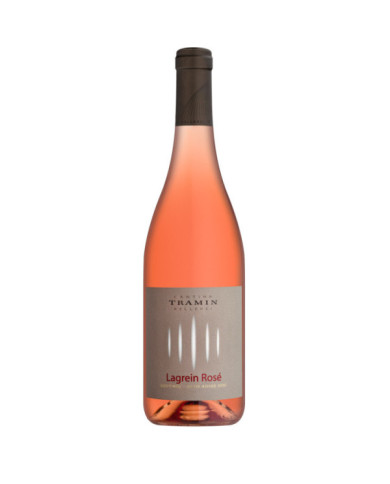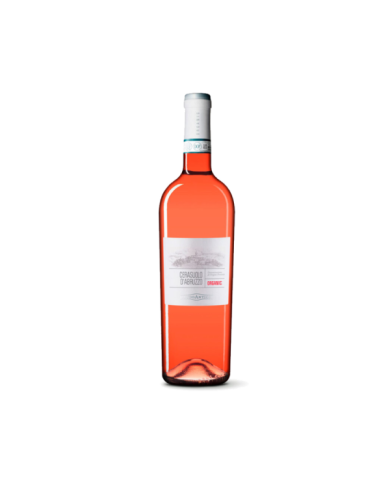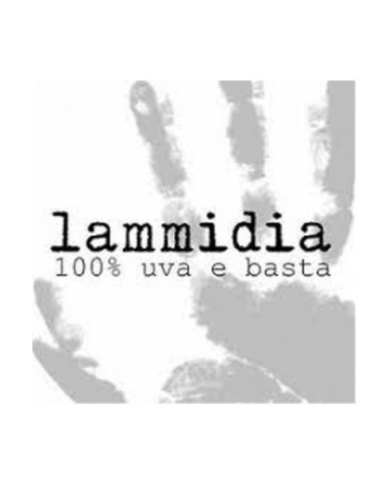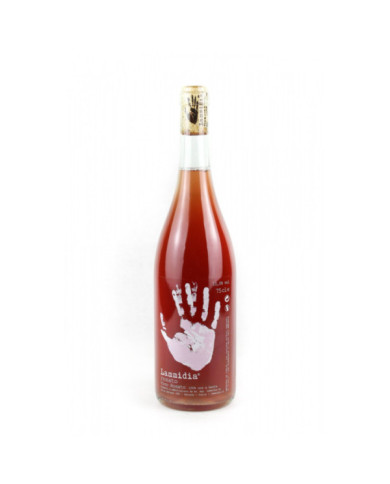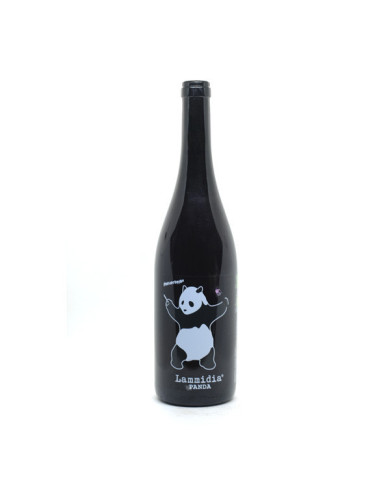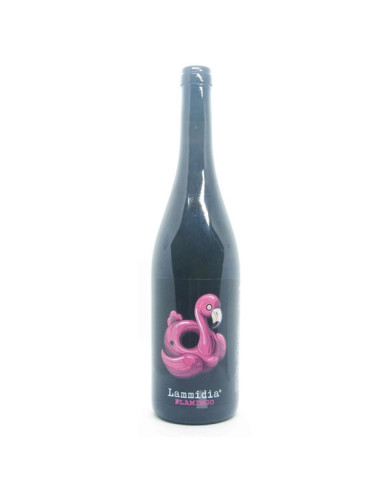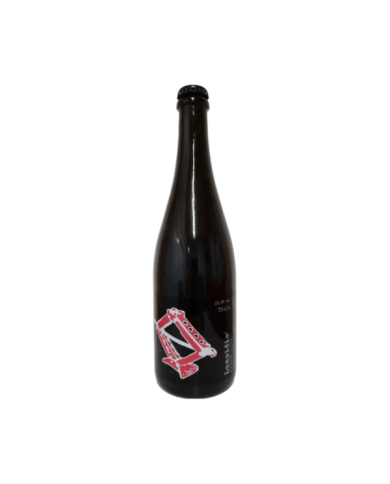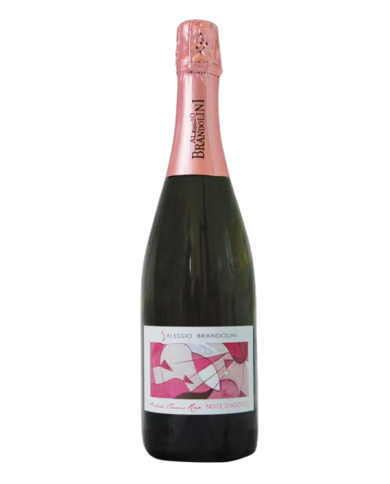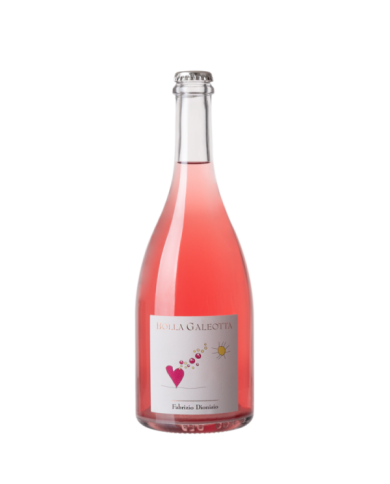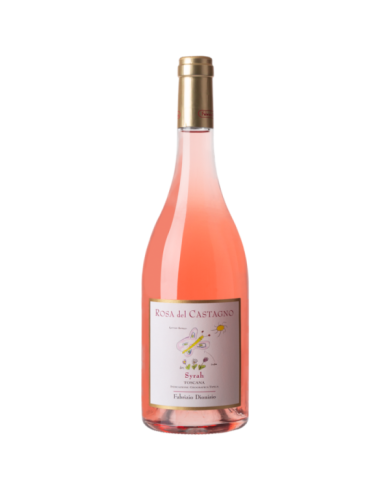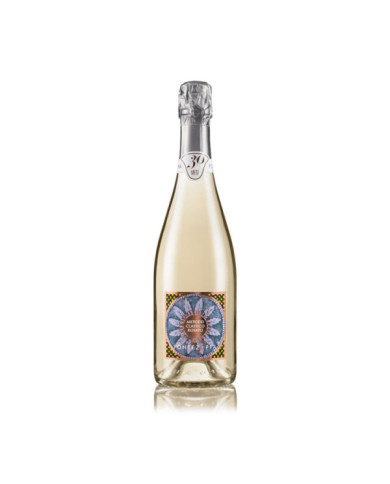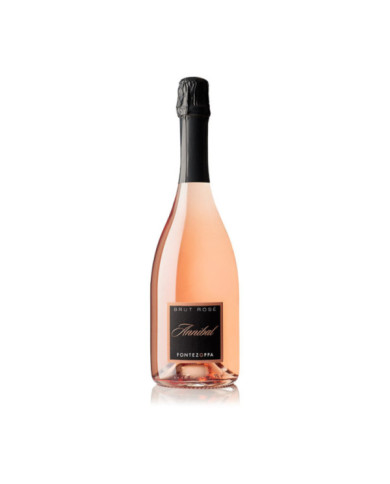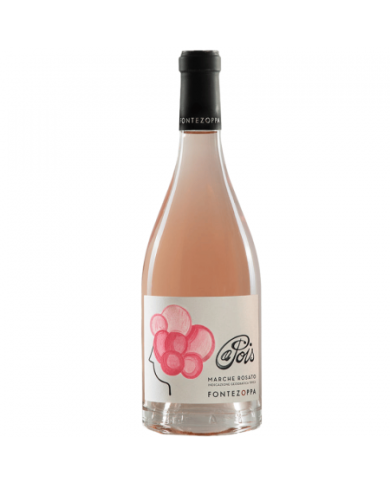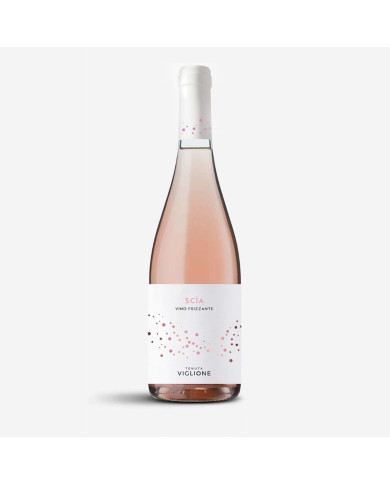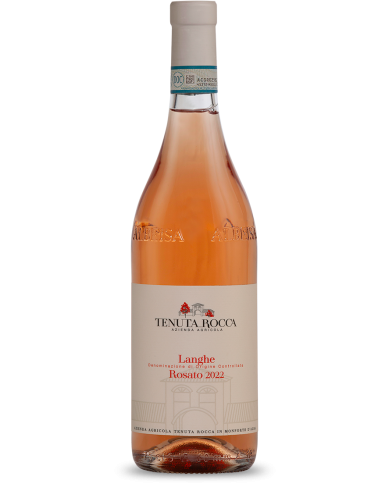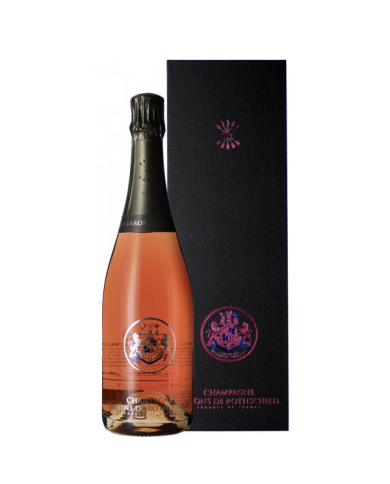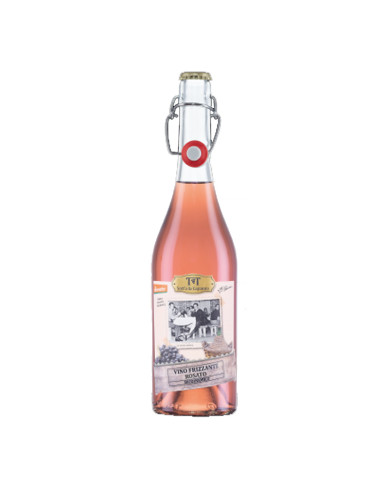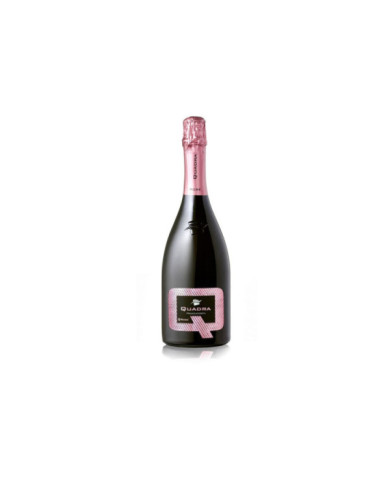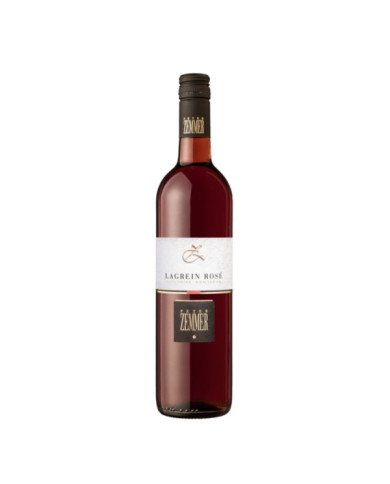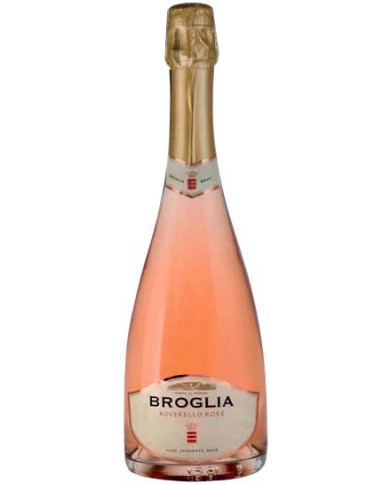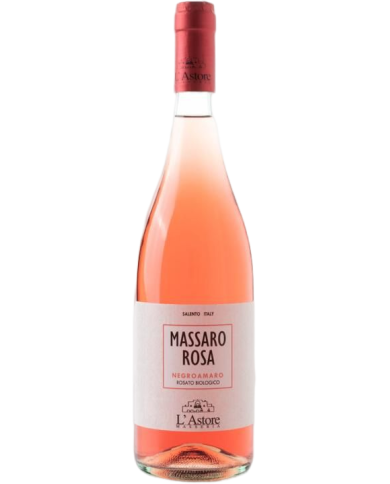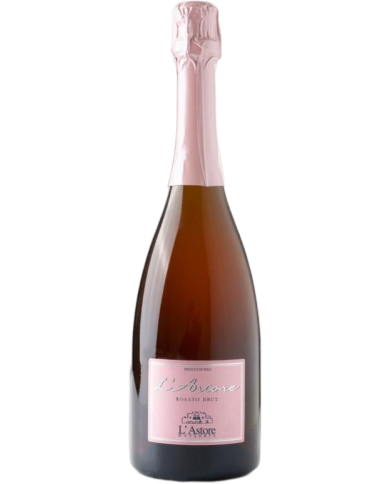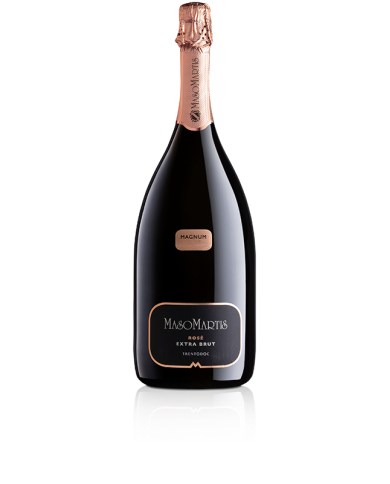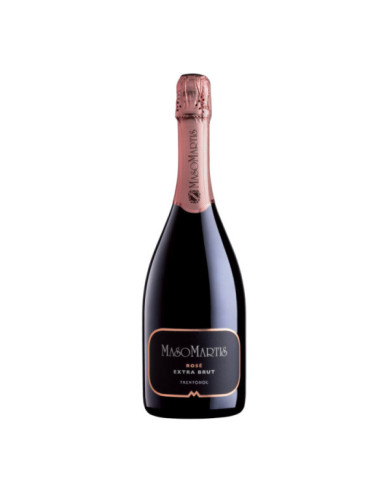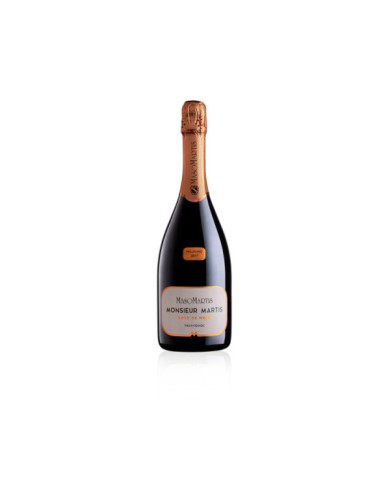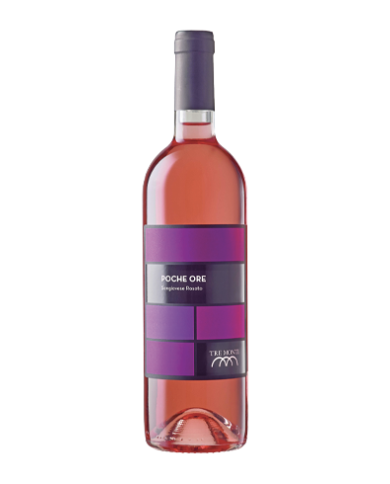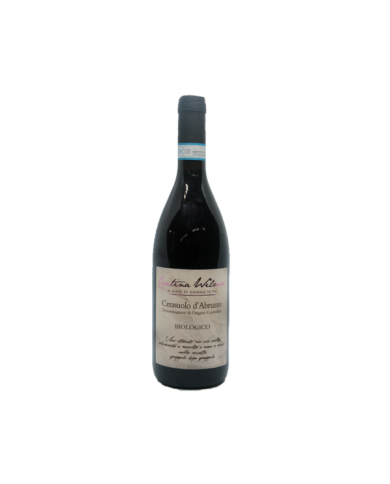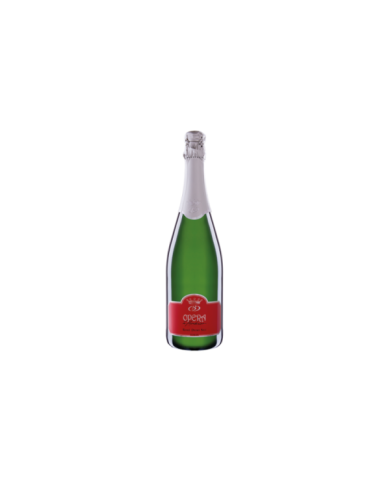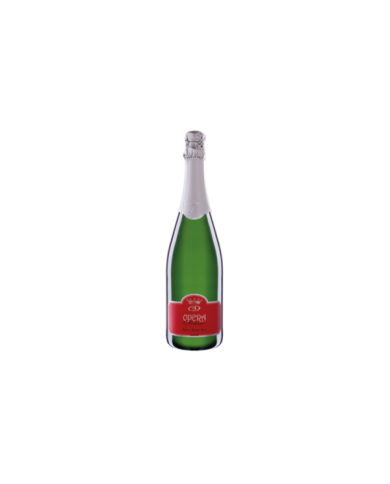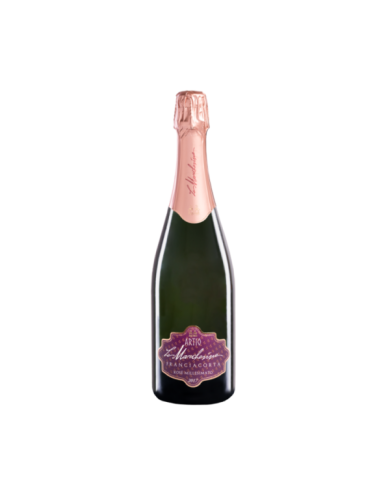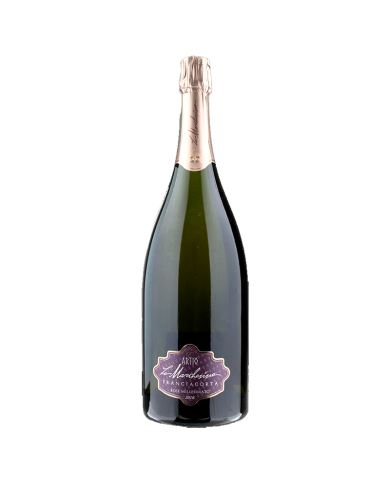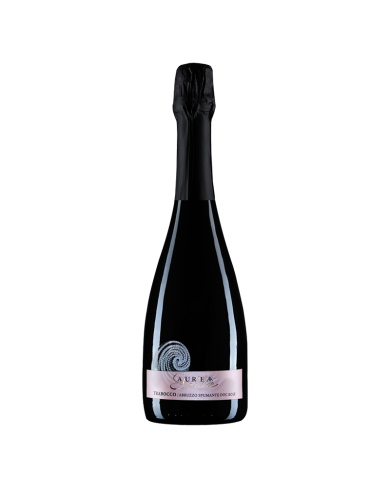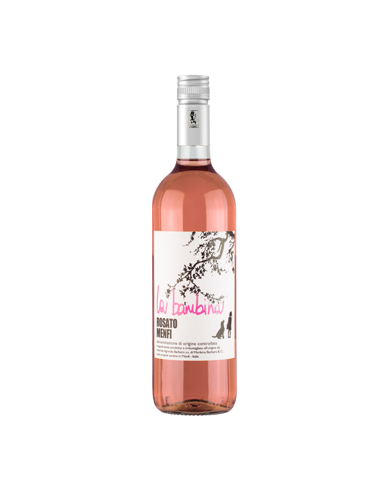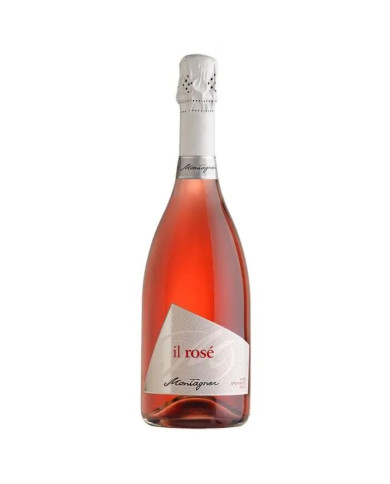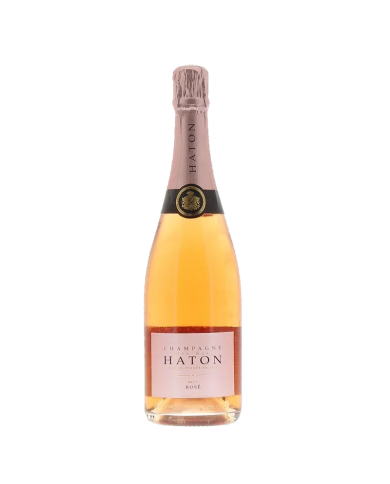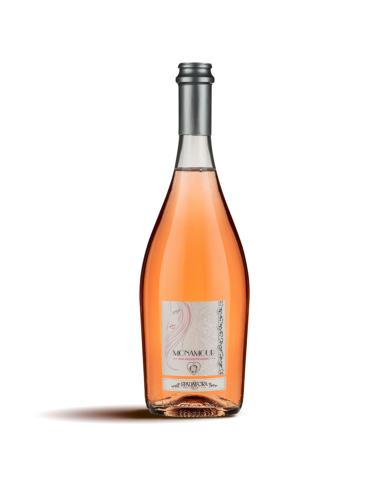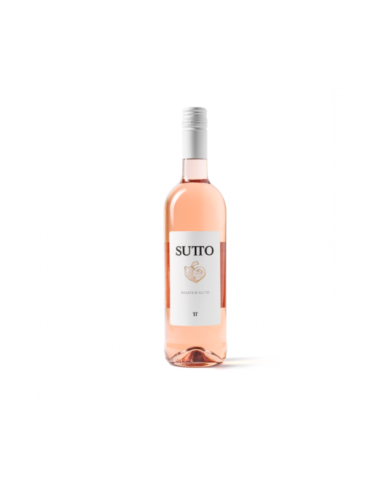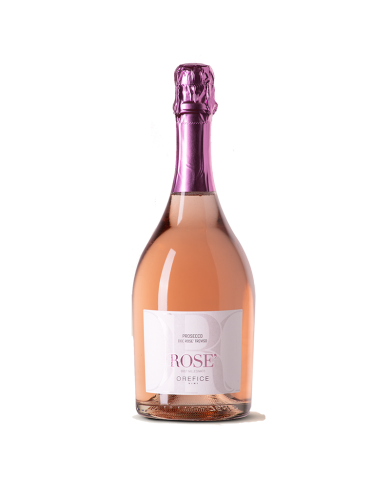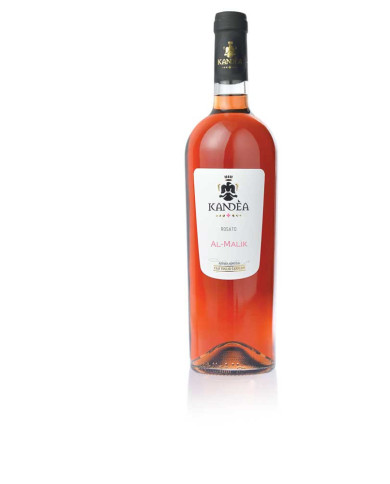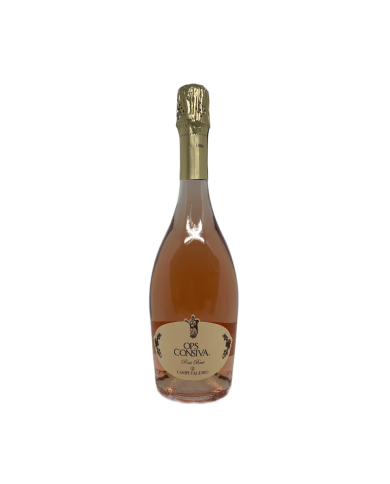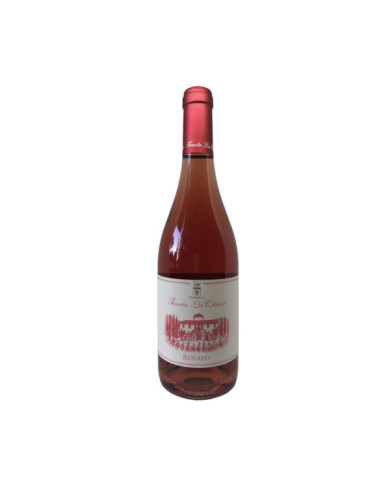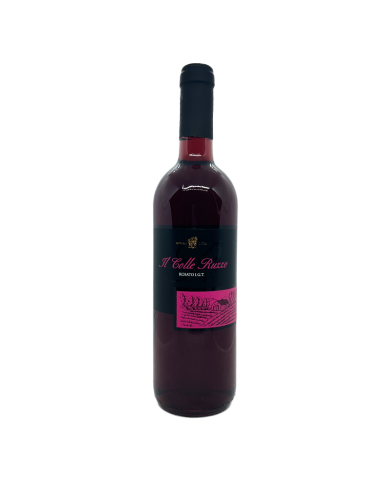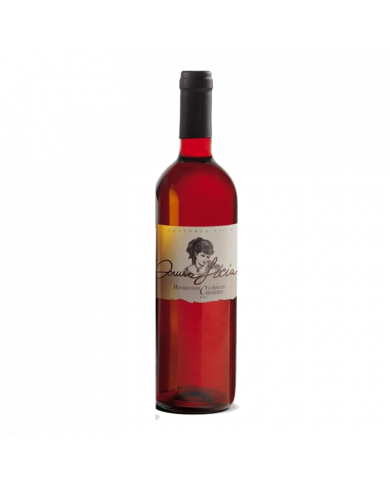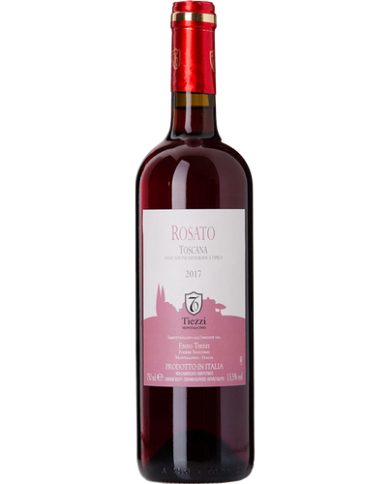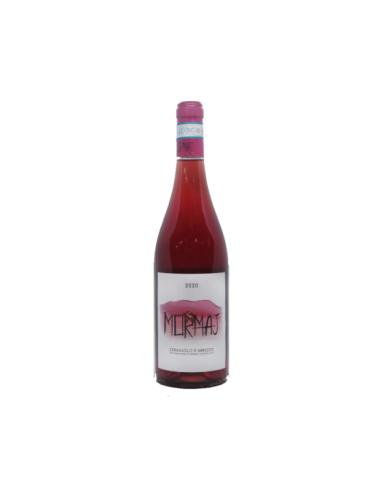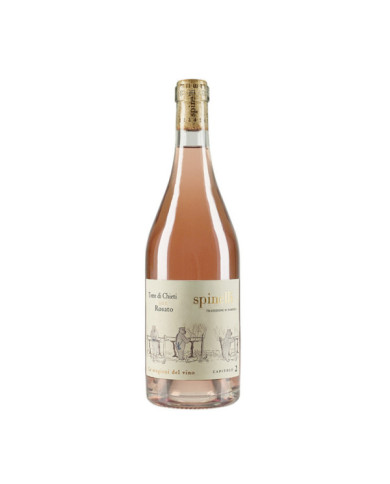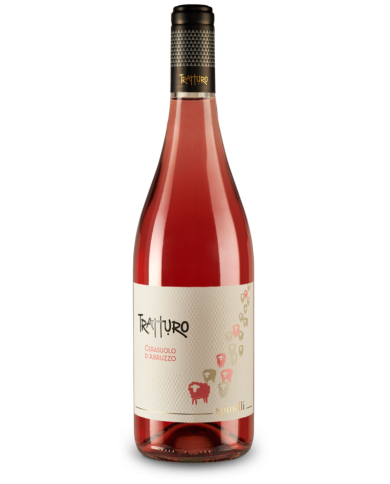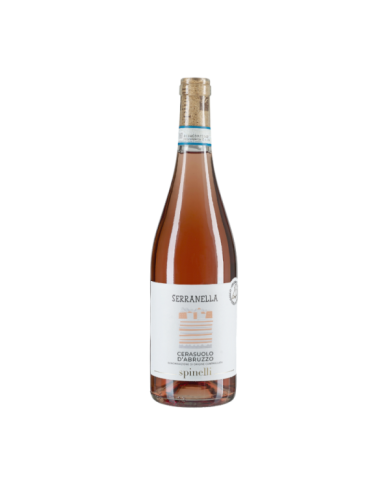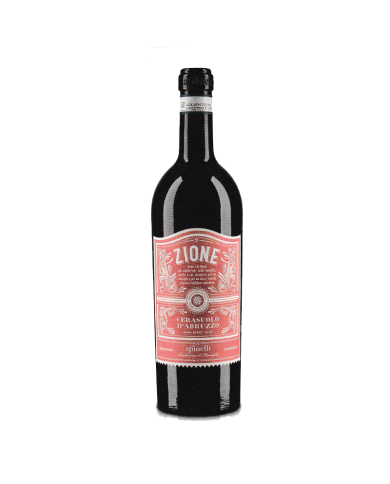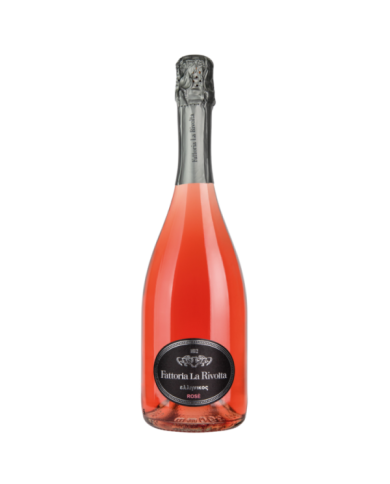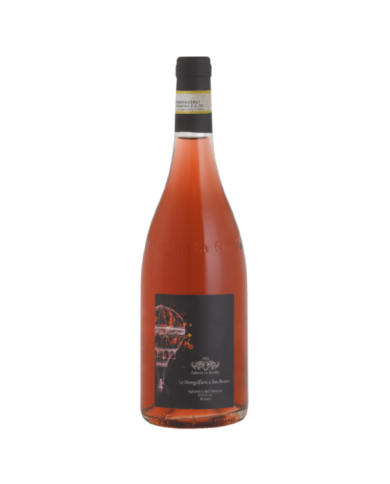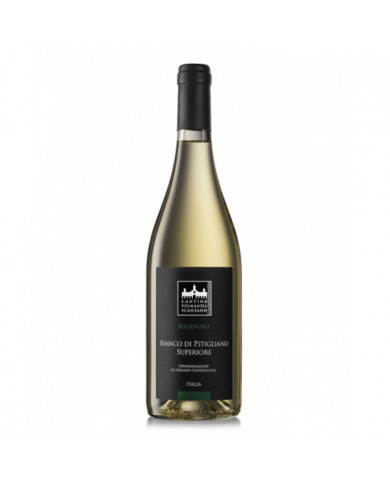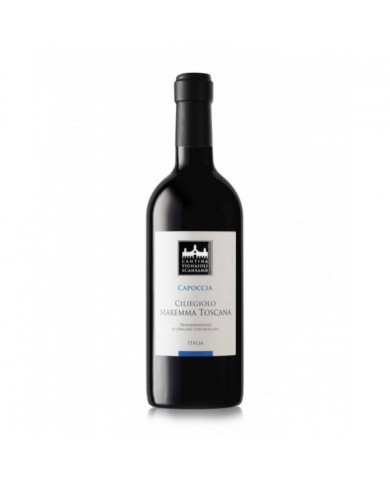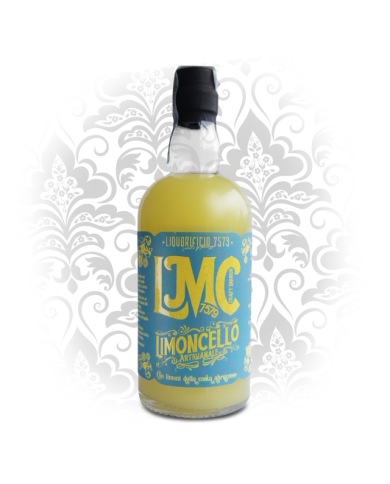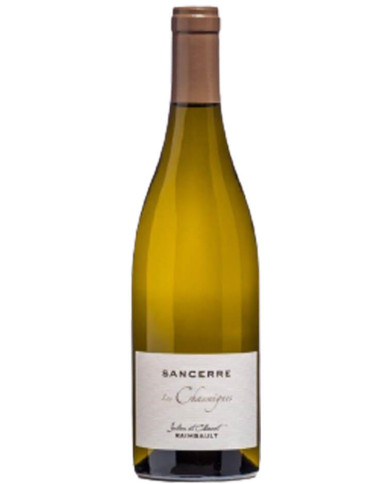Prodotto con uve Negroamaro, raccolte manualmente ad inizio settembre. Breve macerazione pellicolare direttamente in presa e fermentazione in bianco a temperatura controllata (18°C), successivo breve affinamento in acciaio prima di essere imbottigliato.
Colore: rosa corallo intenso brillante e luminoso anticipa la buona struttura del vino. Profumo: accattivante al naso con note intense di ciliegie fresche melagrana mela rossa fragoline di bosco e lampone arricchite da piacevoli sbuffi minerali. Sapore: succoso e fresco al palato ben strutturato croccante sapido in fondo tanta succosa acidità finale lungo.
Colore: rosa corallo intenso brillante e luminoso anticipa la buona struttura del vino. Profumo: accattivante al naso con note intense di ciliegie fresche melagrana mela rossa fragoline di bosco e lampone arricchite da piacevoli sbuffi minerali. Sapore: succoso e fresco al palato ben strutturato croccante sapido in fondo tanta succosa acidità finale lungo.
Red berried grapes of the territory, harvested and pressed immediately without maceration. Vinified at low temperature. After vinification, the wine ages for 6 months in steel in order to harmonize and enhance its varietal aroma characterized by aromas of pink petal flowers, banana, pineapple, pear, wild strawberry and wild cherry. Pale pink color, on the palate it is fresh, elegant and with a pleasant finish. The pleasant salty note gives a lean and refreshing drink. Unmissable during summer aperitifs based on local butchery, it is a wine that calls one bottle after another and invites to a convivial sharing. Perfect as an aperitif, it goes well with raw seafood dishes and fried Adriatic paranza
This simple and intense Salento Rosato PGI "Venus" of the Conti Zecca is made from 70% Negroamaro grapes and the remainder from complementary vines and is born in the municipality of Leverano, in the heart of Salento. It takes its name from the planet Venus and the goddess of love, beauty and pleasure.
Cherry pink in color that recalls the color of cherry and with an intense and persistent aroma of red fruits such as strawberries, black cherries and berries, black cherry and strawberry jam and red flowers. The taste is soft, round, long, with a characteristic hint of almond. It is excellent with first courses, white meats, boiled meats, and even medium-aged cheeses. To be discovered in combination with pizza. Delicious with fish (brodetto and grilled).
Colore rosa tenue. Sentori di piccoli frutti rossi. Al palato risulta fresco e sapido.
Colore rosa tenue, al gusto presenta una buona freschezza ed una buona sapidità .
100% Pinot Nero. Dopo la diraspatura viene fatta una leggera macerazione sulle bucce, seguono la pressatura soffice e la fermentazione a temperatura controllata.
Rosa quarzo brillante. Intenso, il primo impatto ÃĻ floreale con sentori di rosa e viola, con note di piccoli frutti rossi. Buona la struttura tipica del vitigno di origine, spicca di piacevole freschezza e intensa mineralità .
Rosa brillante acceso. Floreale con sentori di rosa e viola, note di piccoli frutti rossi, ribes e lampone. Sapido, con la vinosità piena ed avvolgente tipica del Montepulciano. Buona la struttura e la persistenza. Il finale richiama le delicate note floreali e fruttate.
Zona di produzione Vigneti di proprietà situati nei Comuni di Ascoli Piceno Vitigno Pinot Nero 90%; Chardonnay 10% Grado alcolico 12.5% VOL
Rosa quarzo brillante. Intenso, il primo impatto ÃĻ floreale con sentori di rosa e viola, con note di piccoli frutti rossi. Buona la struttura tipica del vitigno di origine, spicca di piacevole freschezza e intensa mineralità .
Pur utilizzando solo uve âNero di Troiaâ, Luigi Nota realizza un bianco spumante âMetodo Classicoâ e un rosÃĐ, sempre metodo classico, di assoluta eccellenza, il âRegina Luciaâ. Lâazienda, dunque, copre una nicchia produttiva innovativa e dâeccellenza, ma ÃĐ molto legata al territorio. A partire dalla piccola vigna del nonno, Luigi Nota ha appreso il mestiere di vignaiolo dal padre Vincenzo e negli ultimi anni si ÃĻ fatto promotore di un ritorno alla terra della famiglia a partire dal 2013.
Organoleptic Characteristics Color Bright and lively pale pink Smell Intense fruity notes of white pulp peach intertwine with notes of small red fruits Taste On the palate it is fresh, silky, well balanced, soft and with good persistence Food pairings Excellent as an aperitif, particularly suitable for all seafood dishes, but also second courses based on undead meat. Serving temperature 8-10 °C
The grapes come from vineyards that extend over hills adjacent to the mountain, at an altitude between 250 and 400 m slm , on calcareous soils of clay, gravel and sandy conformation, subjected to strong temperature variations.
a juice of wild strawberries and currants that ends with a strong acidity! To drink as much as I can!!!
Panda di Lammidia is a rosÃĐ wine obtained from a blend of red and white grapes. The vinification takes place spontaneously in cement, while the refinement takes place in anofra. Panda is a fresh, fruity wine, with excellent minerality and drinkability.
It has a pink color with shades that tend to amber, red reflections. The nose highlights the dog rose and hints of grapefruit. In the mouth it is fresh, straight, pleasant and with a good minerality.
it is a rosÃĐ with intense fruity aromas, which combines balance and pleasant depth. Made exclusively in steel, it is refreshing and delicately almondy on the finish.
QROSÃ BRUT is the evolution of a cuvÃĐe based on Pinot noir and Chardonnay fermented in stainless steel and barrique. After tirage, the wine ages for over 42 months before disgorgement. The Pinot noir, grown on the morainic slopes, brings backbone and thickness as well as the characteristic scent of small red fruits, while the Chardonnay gives it fullness and roundness.
Girolamo Russo's Etna Rosato was born in the lower old vineyards located in the San Lorenzo district, in the extraordinary wine-growing panorama of Etna, a terroir particularly suited to the production of wines of great value, thanks to unique temperature ranges.
Born from clean and sustainable agriculture, respecting a landscape designed by culture and tradition, since 2010 the wines of L'Astore are certified "produced from organic grapes". Symbol of the Salento area in its rosÃĐ vocation and in the old Alberelli di Negroamaro and Primitivo; the production enhances the ancient native vines such as Negroamaro, Malvasia Nera, Malvasia Bianca Antica, Susumaniello and Primitivo.
Born from clean and sustainable agriculture, respecting a landscape designed by culture and tradition, since 2010 the wines of L'Astore are certified "produced from organic grapes". Symbol of the Salento area in its rosÃĐ vocation and in the old Alberelli di Negroamaro and Primitivo; the production enhances the ancient native vines such as Negroamaro, Malvasia Nera, Malvasia Bianca Antica, Susumaniello and Primitivo.
There are âfemaleâ rosÃĐs and âmaleâ rosÃĐs. Here, this is a male rosÃĐ, which likes a cold cuts platter more than a fish cruditÃĻ. Only 'a few hours', maximum five, on the skins.
Obtained from native grapes and selected in the harvest. Appearance of intense cherry color with pink reflections. On the palate it is fruity with notes of black cherry and cherry. Pairings: throughout the meal.
Brilliant pink with a fine and persistent perlage. Perfect with shellfish, raw fish and fish soups. Excellent with pizza, cold cuts, and as an aperitif
The Little Girl is play, curiosity, discovery. It is the wine that I have dedicated to women, to their strength, to their ability to fight for what they believe in without being frightened by difficulties. Its delicately coppery color is fascinating as a prelude to a fragrant bouquet of wild rose and wild strawberries, pomegranate, watermelon and lemon peel. Savory and crunchy on the palate, it is a very pleasant wine, whose persistence is accentuated by an iodized, almost marine finish.
WHITE COLLI DI LUNI DOC âFIOR DI LUNAâ LUNAE BIANCO COLLI DI LUNI DOC âFIOR DI LUNAâ LUNAE: The color is pale straw yellow with greenish reflections. The scent is fine and delicate with citrus and floral hints of hawthorn and elderberry. In the mouth it is fresh, sapid and of good character. The aromatic notes perceived in the perfume are wonderfully rediscovered. Excellent as an aperitif. Pleasantly accompanies seafood salads, white fish and ratatuia vegetables.
Maison Jean-NoÃŦl HATON's CuvÃĐe RosÃĐ is a blend of 35% Pinot Meunier, 30% Chardonnay and 35% Pinot Noir, of which 10% is vinified as red wine.
Rose petal colour. On the nose small red fruits and aromatic herbs, thyme, basil and rosemary. Fresh, savory in the mouth, notes of medlar and a pleasantly dry finish. Serve at about 16° with seafood first courses, fried fish, stewed fish or as an aperitif.
Particularly suitable with first courses or fish and shellfish soups, excellent pairing with a platter of raw ham, buffalo mozzarella and cherry tomatoes, superlative with a good pizza.
Particularly suitable with fish first courses, shellfish soups, excellent pairing with a platter of cold cuts, superlative with a good gourmet pizza.
Rose gold goes perfectly with shellfish, tempura vegetables, fried seafood and simple dishes such as white pizza and refined finger foods. Perfect with vegetable risottos, not too elaborate fish main courses. Ororos is able to give that fresh and pleasant note to the palate that falls in love with its versatility.
Light coppery pink colour. Delicate nose. Primary flavors of red fruit, flowers, citrus, melon and a nice crunchy green flavor on the celery or rhubarb-like finish. Aromas of melon, strawberry and magnolia. Both fruity and sharp on the palate.
Rosato Elba Doc 2022 is obtained from Sangiovese and Merlot grapes grown on the clayey-ferrous soils of the company. The contact of the must with the skins takes place for at least 12 hours. This is followed by a soft pressing and slow fermentation at a controlled temperature. The result is a cherry-pink colored wine with garnet reflections. The bouquet has hints of English candy, wild strawberries and raspberry. Balanced, fresh, with good persistence with a slight tannic finish. It is the ideal wine for cold cuts, roast meats and grilled pork, but also in summer with panzanella, salads and savory pies.
Cerasuolo is a gem that only Abruzzo can offer: a wine produced exclusively from Montepulciano grapes, left unpeeled for a very short time and immediately fermented.
The Rosato "Donna Licia" is a versatile wine, produced mainly with Montepulciano grapes and a small percentage of Chardonnay and other white grapes that allows us to make it more pleasant on the palate and to lower the degree that would be too high for a wine suitable for aperitifs. .
The color of this wine is a bright peach; the nose is delicate and elegant with notes of light pulp fruit, pomegranate and white flowers. Soft, enveloping mouth, moderated by an excellent freshness and a subtle sapidity. It is an excellent product for the whole meal and an elegant companion for a perfect aperitif.
It is a very juicy wine, with heady aromas and the color of cherry juice
In our cellar, between the MORrone and MAJella mountains MORMAJ is born, a rosÃĐ wine obtained by spontaneous fermentation, not clarified, is aged in steel tanks. Any deposits on the bottom do not constitute a defect in the wine and do not alter its taste.
Dull pink color with soft golden hues. Intense fruity aromas, delicate floral notes and nuances of banana and black cherry. With a good structure, it is soft, fresh and balanced. Excellent as an aperitif and perfect with pizza, it is decidedly versatile in combinations at the table. It goes well with both white meats and fish, but it is unsurpassed with fish soup, tripe, fresh cheeses and grilled vegetables.
Cherry red color with bright violet hues. Intense fruity aromas, delicate floral notes and hints of wild berries and black cherry. With a good structure, it is soft, fresh and balanced. Excellent as an aperitif and perfect with pizza, it is decidedly versatile in combinations at the table. It goes well with both meat and fish.
Cherry red color with bright violet hues. Intense fruity aromas, delicate floral notes and hints of wild berries and black cherry. With a good structure, it is soft, fresh and balanced. Excellent as an aperitif and perfect with pizza, it is decidedly versatile in combinations at the table. It goes well with both white meats and fish, but it is unsurpassed with fish soup, tripe, fresh cheeses and grilled vegetables.
Yield per vine 1 kg, harvest 25-28 September. The wine is obtained by extracting the must from the Chianti Classico, Riserva, Percarlo, Ricolma tanks within 12-24 hours of placing the grapes, and partly with grapes (Merlot, Sangiovese, Canaiolo) harvested early and vinified in white. Slow fermentation at a temperature below 23°C, with the addition of about 15% of de-stemmed grapes. Maturation for 5 months in steel. The wine is subjected to light filtering, so it may have natural sediment. 8,200 bottles bottled on March 20th. Organic wine.
RosÃĐ wine pairings
RosÃĐ is a very versatile wine, it adapts to the most varied combinations. Thanks to its freshness, it lends itself both to informal combinations, accompanying cheeses, pizza, fries, mushrooms, and to combinations with more structured dishes, accompanying fish-based dishes equally well.
The best Italian rosÃĐ wine
In recent years the production of rosÃĐ wine in Italy has grown exponentially, really good ones are produced and they deserve to be tasted. RosÃĐ was born in Southern Italy, but is currently produced throughout the peninsula. Italian rosÃĐ wines boast a long tradition, fresh and fragrant wines that skilfully accompany the many dishes of our local culinary tradition. By entering the Clickwine section dedicated to rosÃĐ wines, you will find the best online offers to be able to buy bottles of DOC rosÃĐ wine produced by the most prestigious wineries in Italy. With our exceptional online sale you can bring traditional Italian rosÃĐ wines to your table, with incredible savings on the list price. Don't miss the opportunity to enrich your personal cellar with a high quality rosÃĐ wine, a unique opportunity to make evenings in the company of friends and family even more perfect.
Why is rosÃĐ wine pink?
On rosÃĐ wine they really feel all the colors. Many are convinced that it comes from the mixing of white and red wines (a practice which is prohibited by law), and this has certainly not helped its reputation.
The intensity of the color of the rosÃĐ wine and its aromas are essentially conditioned by the maceration on the skins of the red grapes with which these wines are produced. But what are the colors of rosÃĐ wine? RosÃĐ wine can range from soft pink, cherry, to claret pink. If you want to obtain a soft pink, you need to macerate for a very few hours, from 2 to 4, while for a cherry the time can go up to 7-10 hours. A very bright pink claret, the maceration time can be up to 24 hours.
What are the best rosÃĐ wines?
RosÃĐ wines can be of very different quality, depending on the production region, the grape variety used and the winemaking techniques. Some very popular rosÃĐ wines come from France, in particular from the Provence region, where light and fresh wines with aromas of red berried fruit and a marked acidity are produced. Other high quality rosÃĐ wines are produced in Italy, in particular in Tuscany and Puglia, and in Spain, where more structured wines with greater aromatic complexity are produced. Other regions renowned for their rosÃĐ wines are California, Portugal and Australia.
It is important to note the quality of a rosÃĐ wine depends on the production techniques, the climatic conditions and the grapes used. Hence, it is difficult to make a list of the absolute best rosÃĐ wines, as it depends on one's personal tastes and preferences. However, some very popular rosÃĐ wines are:
- ChÃĒteau d'Esclans Whispering Angel (Provence, France)
- Domaine Tempier Bandol (Provence, France)
- Biserno Insoglio del Boar Estate (Tuscany, Italy)
- Le Pupille Saffredi Farm (Tuscany, Italy)
- Quinta do Crasto RosÃĐ (Douro, Portugal)
- Sandhi Santa Barbara County RosÃĐ (California, USA)
- Penfolds Koonunga Hill RosÃĐ (Barossa Valley, Australia)
It is advisable to try different rosÃĐ wines to find out which one you like the most, keeping in mind that some rosÃĐ wines are more suited to be drunk alone while others are better paired with certain dishes. In general, rosÃĐ wines are ideal for summer, as they are fresh and light, but they can be enjoyed at any time of the year according to personal tastes.
What do you eat with rosÃĐ wine?
RosÃĐ wine is a very versatile type of wine that pairs well with a wide variety of dishes. Since it has a slightly lower alcohol content than red wines and a slightly lighter structure, it is particularly suitable for accompanying light and fresh dishes, such as fish, white meat and vegetables. Here are some ideas for pairing rosÃĐ wine with food:
- Fish: rosÃĐ wine goes well with light fish such as salmon, tuna and sea bass, but also with oily fish such as mackerel and squid.
- White meat: rosÃĐ wine is perfect to accompany white meat such as chicken, turkey and rabbit.
- Vegetables: rosÃĐ wine goes well with grilled vegetables, in particular with red berried ones such as tomatoes and aubergines.
- Cheeses: RosÃĐ wine pairs well with light cheeses like brie, camembert, and roquefort.
- Salads: rosÃĐ wine is perfect to accompany summer salads, especially if dressed with an emulsion of olive oil and balsamic vinegar.
RosÃĐ wine can also be drunk on its own as an aperitif or as an accompaniment to a light meal. In general, it is important to combine rosÃĐ wine with light and not too tasty foods to prevent the wine from being overwhelmed by the flavors of the food. It is advisable to taste the wine before deciding which food to pair it with, in order to choose the dish that best matches its aromatic profile and balance.





